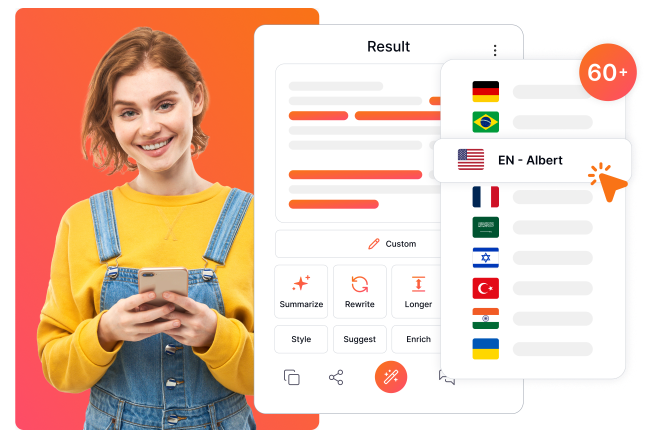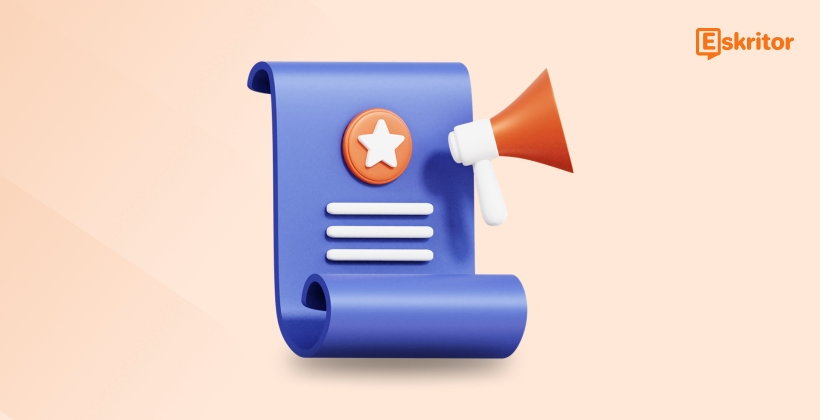The Role of AI in Modern Editing Practices
The Role of AI in Modern Editing Practices
Blog Article
Why AI Editing is Revolutionizing Proofreading
Artificial intelligence (AI) writing technology has evolved fast in the last decade, reshaping the way we develop and communicate with prepared content. From syntax correction tools to AI-generated books, the options look limitless. But wherever just is that engineering going? Let's investigate the inventions, difficulties, and potential future of AI Editing.

How AI Publishing Technology Operates Nowadays
At their core, AI writing engineering relies on Normal Language Processing (NLP) and unit learning. These technologies allow designs to comprehend, make, and improve individual language. Methods accessible nowadays master responsibilities like:
1. Material Creation
AI has reached a point wherever it could generate complete blog threads, social media marketing captions, and even news articles. Some models can handle mimicking individual writing models so efficiently that distinguishing between AI- and human-written material has become significantly difficult.
2. Grammar and Fashion Idea
AI-powered publishing personnel don't just check for syntax and spelling problems; additionally they provide suggestions to enhance tone, understanding, and sentence structure, creating complex publishing accessible to a broad audience.
3. Belief Evaluation
AI can consider the psychological tone of a bit, enabling organizations to determine how their communications may resonate with readers. This really is specially of use in advertising and client interaction.
The Current Trends in AI Writing Technology
Several trends are surrounding the following period of AI-powered writing instruments:
• Personalization
AI writing technology is increasingly capable of tailoring material to personal preferences. Designs may adjust to a user's writing fashion, ensuring the productivity thinks authentic.
• Multilingual Abilities
Several AI methods are growing their international reach by offering improved interpretation characteristics and support for multiple languages.
• Improved Research Features
AI resources now get the capacity to analyze great amounts of data and offer fact-checked, well-researched writing in seconds, simplifying the procedure for specialists in industries like legislation, financing, and journalism.
What the Future Supports for AI Publishing Technology
1. Increased Creativity
While current AI is good at generating material, their creativity remains restricted to habits within their education data. Future AI is not just expected to aid but to create unique, topical performs that problem human imagination.
2. Smooth Effort
Envision an AI that operates alongside you in real-time, doing your phrases, performing live edits, and actually brainstorming ideas. AI writing methods may possibly soon become co-authors, allowing creativity to movement uninterrupted.
3. Moral and Accessible Design
With rising matter about plagiarism, misinformation, and bias, developers will work toward more clear AI teaching techniques and ethical implementation. Future resources will probably provide more comprehensive citations and methods to ensure accountability.
Issues and Factors
The progress of AI publishing engineering isn't without hurdles, including:
• Ethical Problems

Who possesses material produced by AI? Just how can we guarantee AI-generated material is not distributing misinformation? These debates stay unresolved.
• Human-AI Stability
Will AI complement individual creativity or completely replace specific roles? Many writers and artists worry about their relevance in an AI-driven world.
• Accessibility Divide
Not all companies or regions have equivalent use of cutting-edge AI tools, increasing questions about the influence of this engineering on international inequality.
Adjusting the Way We Create
AI publishing technology is still in their infancy compared to their potential. Whether you're a student designing documents, a material marketer targeting certain audiences, or even a novelist seeking creativity, AI tools may continue to revolutionize the publishing process. The next decade promises breakthroughs that blend individual ingenuity with device intelligence, making a future wherever writing is more efficient, available, and impactful than ever before.
Report this page